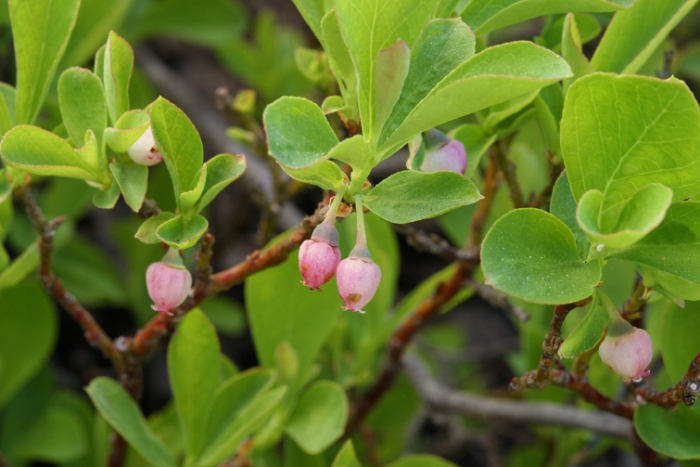Dwarf Bilberry
(Vaccinium cespitosum)
Dwarf Bilberry (Vaccinium cespitosum)
/
/

Steve Matson
CC BY 4.0























Estimated Native Range
Summary
Dwarf Bilberry is valued for its ability to form ground cover in rocky or mountainous areas, and its berries are appreciated for their flavor and nutritional value. It is often used in rock gardens, as a border plant, or for naturalizing wild areas. The plant prefers acidic, well-drained soils and can tolerate partial shade, although it will produce more fruit in full sun. While generally low-maintenance, it can be susceptible to fungal diseases in humid conditions. Dwarf Bilberry is also recognized for its ecological role as a host plant for the butterfly Lycaeides idas nabokovi. Gardeners should be aware that while it is not typically invasive, in ideal conditions it can spread via runners.CC BY-SA 4.0
Plant Description
- Plant Type: Shrub
- Height: 0.5-1.5 feet
- Width: 1-1.5 feet
- Growth Rate: Moderate
- Flower Color: Pink, White
- Flowering Season: Spring, Summer
- Leaf Retention: Deciduous
Growth Requirements
- Sun: Full Sun
- Water: High
- Drainage: Fast
Common Uses
Edible*Disclaimer: Easyscape's listed plant edibility is for informational use. Always verify the safety and proper identification of any plant before consumption., Groundcover, Low Maintenance, Rock Garden, Water Garden
Natural Habitat
Subalpine and alpine meadows, open coniferous forests, and peat bog edges
Other Names
Common Names: Dwarf Whortleberry, Dwarf Blueberry, Dwarf Huckleberry
Scientific Names: , Vaccinium cespitosum, Vaccinium arbuscula, Vaccinium arbuscula, Vaccinium caespitosum, Vaccinium caespitosum var. angustifolium, Vaccinium caespitosum var. arbuscula, Vaccinium caespitosum var. caespitosum, Vaccinium caespitosum var. cuneifolium, Vaccinium caespitosum var. paludicola
GBIF Accepted Name: